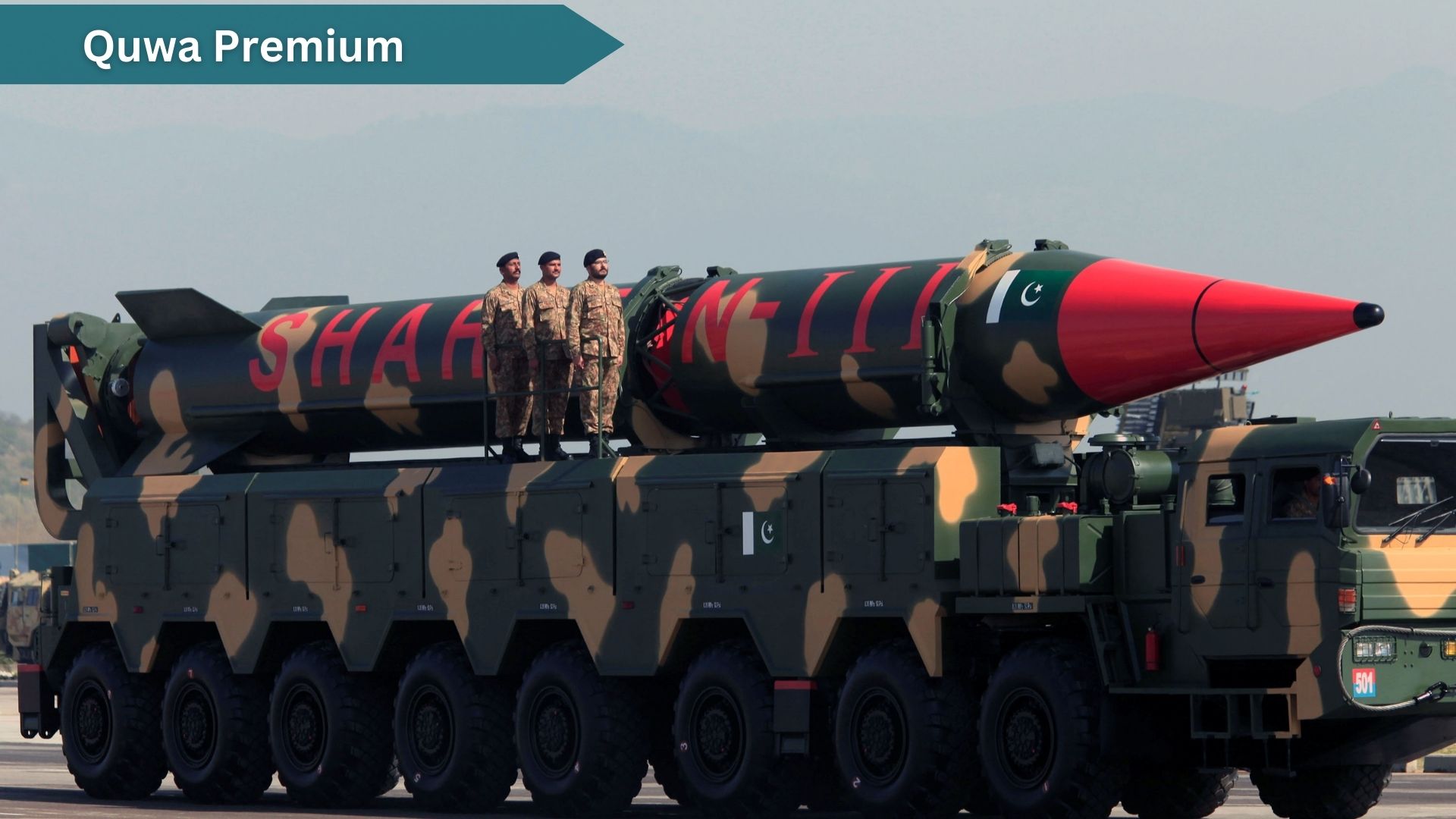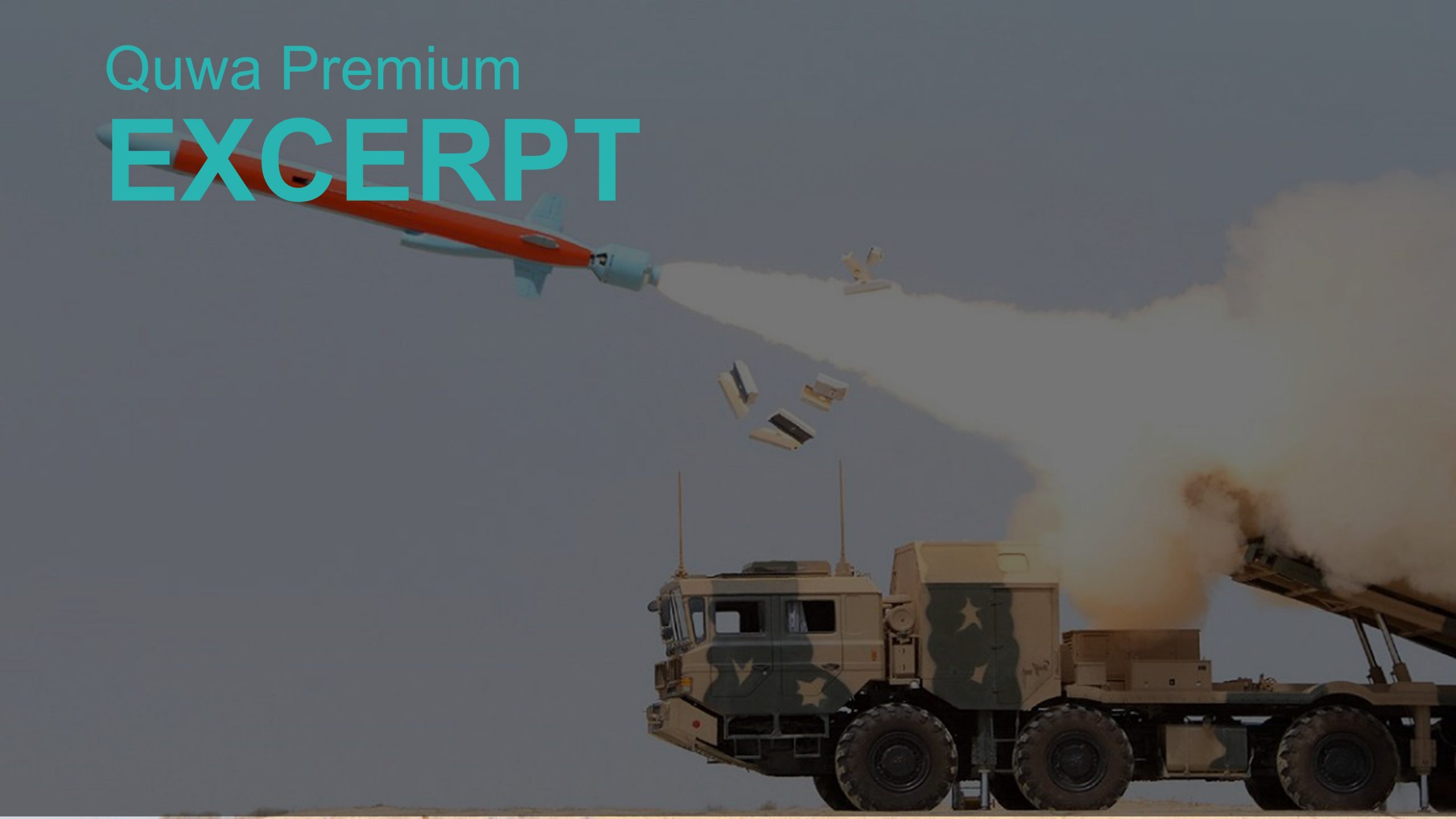7103Views

US Targets Pakistan’s Ballistic Missile Program Quwa Premium
On 18 December, the U.S. State Department announced that the United States imposed sanctions on four entities it alleges are supporting Pakistan’s efforts to develop long-range ballistic missiles.
These entities are:
- The National Development Complex (NDC), a state-owned enterprise (SOE) the State Department says is responsible for developing Pakistan’s Shaheen-series of ballistic missiles as well as various missile-related items, such as missile-testing equipment.
- Akhtar and Sons Private Limited, a company the U.S. alleges helped facilitate the procurement of equipment to support NDC’s missile development programs.
- Affiliates International, another company the U.S. alleges helped manage the procurement of equipment relevant to missile development for NDC and other Pakistani weapons SOEs
- Rockside Enterprise, a company the U.S. says worked with NDC to acquire and supply critical equipment for Pakistan’s long-range ballistic missile programs.
Interestingly, this set was the second wave of sanctions targeting Pakistan’s ballistic missile program in just this year. In April, the State Department also sanctioned four companies – three Chinese and one Belarussian – for supplying “missile-applicable items to Pakistan’s ballistic missile program.”
These companies were:
- Minsk Wheel Tractor Plant, a Belarussian company the U.S. alleges of supplying chassis for Pakistan’s ballistic missile transporter erector launcher (TEL) systems.
- Xi’an Longde Technology Development Company, a Chinese entity the U.S. alleges has been supplying filament winding machines meant for manufacturing rocket motor cases.
- Tianjin Creative Source International Trade Co. Ltd., which the U.S. accuses of providing stir welding equipment used for propellant tanks and linear accelerator systems.
- Granpect Company Limited, which the U.S. says worked with Pakistan’s Space and Upper Atmosphere Commission (SUPARCO) and NDC to source testing equipment for large diameter rocket motors.
When it announced the sanctions, the U.S. State Department did not specify why it was concerned with Pakistan potentially developing longer-ranged ballistic missiles.
However, in separate events, Jon Finer, the Deputy National Security Advisor to the White House, said that the U.S. had concerns over the apparent trajectory of Pakistan’s ballistic missile programs, notably the potential of Pakistani missiles with the range to reach the United States.
In an event hosted by the Carnegie Endowment for International Peace on 19 December, Finer stated:
“Recently, Pakistan has developed increasingly sophisticated missile technology. From long-range ballistic missile systems to equipment that would enable the testing of significantly larger rocket motors. If these trendlines continue, Pakistan will have the capability to strike targets well beyond South Asia, including in the United States, raising real questions about Pakistan’s intentions.
The list of countries that possess both nuclear weapons and the missile capability to directly reach the U.S. homeland is very small. And they tend to be adversarial towards the United States, [like] Russia, North Korea, and China. So candidly, it’s hard for us to see Pakistan’s actions as anything other than an emerging threat to the United States.
In his talk, Finer confirmed that the sanctions issued throughout 2024 – including the latest round on 18 December – were aimed at curtailing the development of long-range missiles that could strike targets well beyond South Asia.
Concerns Over Pakistan Focusing Beyond India
Pakistan’s general security posture is centered on countering India, be it with conventional weapons or with strategic systems. Since its nuclear tests in 1998, Pakistan had heavily leaned on nuclear warheads and ballistic missiles to establish deterrence.
However, thanks to China’s technology growth in aerospace, shipbuilding, and armour, Pakistan is now able to invest more in conventional deterrence via new fighter aircraft, air defence systems, submarines and surface warships, and other armaments.
That said, the value of the conventional deterrence capability rests on the credibility of the strategic – i.e., nuclear – systems. But with India’s growing investment in ballistic missile defence (BMD) technology and solutions, Pakistan’s ability to impose itself in terms of nuclear weapons increasingly comes under doubt.
Pakistan’s longest-range ballistic missiles are the Shaheen-III and the Ababeel, which reach ranges of 2,750 km and 2,200 km, respectively. However, the Ababeel is configured with multiple independently targetable reentry vehicles (MIRV), enabling it to strike multiple targets and, potentially, counter India’s BMD coverage.
However, Pakistan is also investing in new-generation strategy delivery systems. However, as these delivery systems require certain technology inputs, the U.S. seems concerned about Pakistan potentially re-leveraging that technology to potentially threaten America.
Based on Finer’s statements, there are three layers to the United States’ concerns over Pakistan’s long-range missile development:
First, there is the clearly stated layer where Washington does not want Pakistan fielding missiles that could reach the territory of the United States, notably intercontinental ballistic missiles (ICBM).
This first layer is clearly defined and, if taken at face value, would limit Pakistan from developing and acquiring specific systems, such as ‘large diameter rockets’ and the necessary inputs to manufacture ICBMs domestically. Currently, America’s sanctions target the development and production of rocket motors that can be used in ICBM designs.
Second, there is the implied layer where the U.S. could have concerns over Pakistan developing and/or acquiring the technologies necessary to build systems that can be used against U.S. territory.
This area could involve a much wider selection of munitions development, such as submarine-launched ballistic missiles (SLBM), hypersonic ballistic missiles, and hypersonic glide vehicles (HGV)…
End of excerpt (873/2,584 words)
Existing Quwa Premium members can log in below
Note: Logged in members may need to refresh the article page to see the article.


